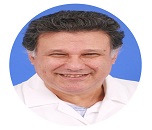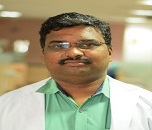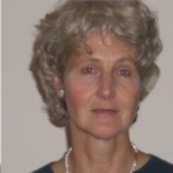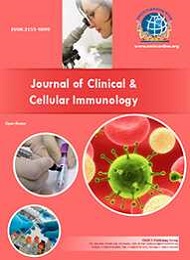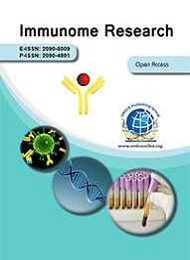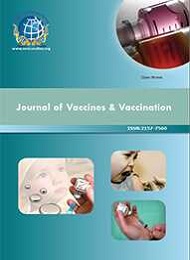Theme: Framing the Response to Emerging Viral Infections
Immune Response-2018
Viral Infections and Immune Response is a nonpareil and open platform to explore and gain the knowledge in the field of Medical Science. This conference brings together Microbiologists, Pathologists, Immunologists, Bacteriologists, Virologists, Professors, Oncologists, Researchers, Scientists, Students in all the areas of Medical Sciences, Pharmaceutical, Life sciences, Medical associations, and societies, to enable an international forum to explore the approved research. Conferenceseries Ltd is a delight to invite you all to attend and register for the “International Conference on Viral Infection and Immune Response” scheduled for Nov 15-16, 2018 in at Dubai, UAE.
The Organizing group is preparing for an energizing and accurate meeting program which incorporates entire addresses, symposia, workshops on an assortment of themes, notice introductions and different projects everywhere throughout the world. We invite you to join us at the International Conference on Viral Infection and Immune Response where you will be sure to have a meaningful experience with scholars from around the world. All members of the International Conference on Viral Infection and Immune Response organizing committee look forward to meeting you at Dubai, UAE.
Why attend?
With people from around the world focused on getting some answers concerning Viral Infections and Immune Response; this is your most obvious opportunity to accomplish the greatest exhibit of individuals from the Virology and Immunology society. Lead presentations, fitting information, meet with present and potential specialists, make a sprinkle with new prescription headways and get name affirmation at this 2-day event. Extraordinarily well-known speakers, the most recent strategies, headways, and the most a la mode invigorates in Virology and Immunology are indications of this gathering.
Target Audience:
- Pharmacists
- Virologists
- Vaccinology/Immunology Students, Scientists
- Vaccinology/Immunology Researchers
- Academic Professionals
- Pharmaceutical Companies
- Primary care doctors
- Primary care professionals
- Researchers & Scientists related to Vaccine R&D
- Deans and Professors
- Directors, CEOs, Presidents and Vice Presidents
- University Faculty
- Medical Schools/Colleges Students
- Nursing Schools/Colleges Students
- Associations and Societies related to Vaccine R&D
- Vaccination Programme Organizing Government and Non-government Organizations
- Business Entrepreneurs
- Medical Devices Manufacturing Companies
- Vaccine Manufacturing Companies
- Vaccine Developers and Investigators
- Hospital Administrators
- Hospital General Counsel
Track1: Viral Immunology
Infections are firmly immunogenic and incite 2 sorts of safe reactions; humoral and cell. The collection of specificities of T and B cells are shaped by modifications and physical transformations. T and B cells don't by and large perceive similar epitopes introduce on a similar infection. B cells see the free unaltered proteins in their local 3-D compliance while White blood cells normally observe the Ag in a denatured shape in conjunction with MHC particles. The attributes of the resistant response to a similar infection may contrast in various people contingent upon their hereditary constitutions.
The humoral reaction is in charge of obstructing the infectivity of the infection. Those of the IgM and IgG class are particularly applicable for a barrier against viral diseases joined by viremia, though those of the IgA class are vital in contaminations obtained through the mucosa. Interestingly, the cell reaction kills the infection tainted cells communicating viral proteins on their surfaces.
Track2: Viral Pathogenesis
Viral pathogenesis is the investigation of how natural infections cause ailments in their objective hosts, more often than not did at the cell or sub-atomic level. It is a specific field of concentrate in virology. Pathogenesis is a procedure in which an underlying contamination turns into an illness. Viral illness is the entirety of the impacts on the host caused by the replication of the infection and of the host's ensuing resistant reaction. Infections can start disease, scatter all through the body, and imitate because of destructiveness attributes. Components of the pathogenesis of viral sicknesses include: implantation of the infection at the gateway of passage, nearby replication, spread to target organs, and shedding of the infection into the earth. There are a few factors that influence pathogenic components. A portion of these components incorporates harmfulness attributes of the infection that is contaminating. Keeping in mind the end goal to cause malady, the infection must overwhelm a few inhibitory impacts introduce in the host. A portion of the inhibitory impacts incorporate separation, physical hindrances have protections and clashing cell susceptibilities. These inhibitory impacts may contrast among people and distinctive races because of the inhibitory impacts being hereditarily controlled.
Track3: Epigenetic Modifications and Viral Infections
Epigenetics is characterized as the investigation of adjustments of the genome, heritable amid cell division that does not include changes in DNA arrangements. Up and coming, epigenetic changes include no less than three general components directing quality articulation: histone adjustments, DNA methylation, and non-coding RNAs (ncRNAs).
For as long as two decades, a blast to our greatest advantage and comprehension of epigenetic components has been seen. This chiefly in light of the impact that epigenetic changes have on an astonishing number of organic procedures, for example, quality articulation, engraving, modified DNA adjustments, germline hushing, formatively prompted undeveloped cell division, and general chromosomal security and personality
Track4: Vaccines and Immunotherapy
Immunotherapy is the Treatment to invigorate or re-establish the capacity of the safe (protection) framework to battle contamination and infection. Organic treatment is in this manner any type of treatment that uses the body's common capacities that constitute the safe framework to battle contamination and ailment or to shield the body from a portion of the symptoms of treatment.
Track5: Viruses and Cancer
The virus is a pathogen made out of nucleic corrosive inside a protein shell, which can develop and duplicate simply in the wake of contaminating a host cell. In excess of 400 sorts of infections that reason an incredible assortment of sickness is known. Every one of them can append to cell films, enter the cytoplasm, assume control cell capacities, duplicate their parts, and collect themselves into developing shapes equipped for tainting different cells. An oncovirus is an infection that can cause a tumour. It presently alludes to any infection with a DNA or RNA genome causing growth and is synonymous with "tumour infection". A tumour is a strange development of cells caused by different changes in quality articulation prompting deregulated adjust of cell expansion and cell demise and at last advancing into a populace of cells that can attack tissues and metastasize too far off locales, causing noteworthy dismalness and, if untreated, passing of the host.
Track6: Terrifying Viral Infections
Infections are extremely minor germs. They are made of hereditary material within a protein covering. Infections cause commonplace irresistible illnesses, for example, the regular icy, influenza and warts. They additionally cause extreme sicknesses, for example, HIV/Helps, smallpox, and Ebola. They attack living, typical cells and utilize those cells to duplicate and deliver different infections like themselves. This can murder, harm, or change the cells and make you debilitated. Diverse infections assault certain cells in your body, for example, your liver, respiratory framework, or blood.
Track7: Gene Therapy
It is the addition of more often than not hereditarily changed qualities into cells particularly to supplant blemished qualities in the treatment of a hereditary issue or to give a specific infection battling capacity. Gene therapy can be utilized on the two kinds of cells in the human body somatic cells, which represent most cell types and germline cells, which are regenerative cells. With somatic cell treatment, just the individual whose cells were changed will be influenced. With germ line cell treatment, the hereditary adjustments will be passed down to a person's kids. At present, somatic cell treatment is viewed as considerably more secure and is the main sort being tried for use in people.
Track8: Innovations in Immunology
Immunology is the branch of biomedical sciences to the investigation of the insusceptible framework physiology both in sound and sick states. It manages the physiological working of the insusceptible framework in conditions of both well-being and illness and additionally breakdowns of the resistant framework in immunological disarranges like sensitivities, hypersensitivity, safe lack, transplant dismissal and immune system issue.
Track9: Bacterial Vs. Viral Infections
Bacteria and viruses are excessively minute, making it impossible to be seen by the naked eye, can cause comparative manifestations and are regularly spread similarly, however that is the place the similitudes end. A bacterium is a solitary, yet perplexing, cell. It can make due alone, inside or outside the body. Most microscopic organisms aren't unsafe. Truth be told, we have numerous microscopic organisms on and inside our body, particularly in the gut to help process nourishment. Infections are littler and are not cells. Not at all like microorganisms, have they required a host, for example, a human or creature to increase. Infections cause diseases by entering and duplicating inside the host's sound cells.
Track10: Viral Proteomics
Proteomics a branch of biotechnology studies about applying the methods of atomic science, natural chemistry, and hereditary qualities to investigating the structure, capacity, and interactions of the proteins created by a specific cell, tissue, or living being, with arranging the data in databases.
Track11: Viral Genomics
Genomics is a branch of biotechnology finds out about applying the systems for acquired qualities and sub-atomic science to the hereditary mapping and DNA sequencing of sets of qualities or the entire genomes of picked living things, with sorting out the outcomes in databases. Genomics is an area inside common properties (i.e., intrinsic attributes) that burdens the sequencing and examination of an animal's genome. The fields of sub-atomic science (subatomic science) and hereditary qualities are for the most part worried over examination of part and point of confinement of the single attributes a basic subject in the present biomedical research. By capability, genomics prohibits single quality research unless the fact is to appreciate a singular quality's things in the setting of the entire genome.
Track12:
The relative ability or capability of a microorganism to cause disease; the degree of pathogenicity. The pathogen that gets itself, either unintentionally or outlines, inside the human or creature host, faculties and adjusts to the overarching conditions by regulating its quality articulation on a worldwide scale. A subset of these qualities will be entering players in the capacity of the microorganism to cause malady. The results of such qualities that encourage the effective colonization and survival of the bacterium in or make harm the host are considered as destructiveness or pathogenicity determinants.
Viral latency is the capacity of a pathogenic infection to lie lethargic inside a cell, meant as the lysogenic piece of the viral life cycle. An inert viral contamination is a sort of persevering viral disease which is recognized from an interminable viral disease.
Track13: Antiviral Medication and Other Treatments
An agent that executes an infection or that stifles its capacity to repeat and, thus, represses its ability to increase and reproduce. The improvement of antivirals has lingered a long ways behind that of anti-infection agents. A virus is a simply hereditary material, DNA or RNA, maybe with a couple of catalysts, wrapped in a protein coat. Further, the virus replicates within the host cell they reside, so it is hard to execute the infection without killing the cell. Some infections can likewise stay torpid in the body without imitating, consequently maintaining a strategic distance from drugs that hinder replication.
The antivirals that have been produced are by and large less viable than one might want. Infections can recreate quickly and, much of the time carelessly, offering to ascend to changes that make them impervious to drugs. Also, for quick moving viral contamination like influenza or a cold, a medication must be capable to have any kind of effect before the illness runs its common course.
Track14: Immune Response to Viral Infection
At the point when our bodies go under assault from a viral contamination they dispatch an advanced safeguard known as 'immune response'. Our insusceptible framework is intended to perceive the cells that make up our bodies and repulse any pathogens. They do this by utilizing an immense armed force of safeguard cells which comprise various kinds of white platelets. We make around a billion of them consistently in our bone marrow. White platelets called macrophages devastate germs when they identify them. Notwithstanding, if a viral contamination starts to grab hold we battle back utilizing an all the more intense barrier of white cells called T and B lymphocytes. Antibodies are an extraordinary protein made by B cells. They tie to an infection to prevent it from reproducing, and furthermore tag infections with the goal that other platelets know to decimate them. White blood cells have diverse parts to play. Some go about as watch pooches that raise the alert when they distinguish attacking infections; others execute infection tainted cells straightforwardly, or help B cells to create antibodies. Once the infection has been cleared, few these B and White blood cells persevere and hold a precise memory of the wrecked virus. This implies our insusceptible frameworks are prepared to keep another disease from a similar infection, without assaulting the body's own particular cells unintentionally. This is known as 'acquired immunity'
Track15: Viruses and Epidemiology
Viral epidemiology the study of disease transmission is the logical teach worried about the investigation of the rate and spread of infections in populaces after some time. Host, infection and ecological elements are checked to decide the flow of viral diseases, a definitive objective of which is to devise mediation systems. Epidemiological investigation is likewise powerful in clearing up the part of infections in the etiology of ailments, in understanding the association of infections with natural determinants of the malady, in deciding elements influencing host defencelessness, in unwinding methods of transmission, and an expansive scale testing of immunizations and medications.
Track16: Pathogens in Bioremediation
Bioremediation is a choice that offers the likelihood to decimate or render safe different contaminants utilizing regular organic movement. All things considered, it utilizes moderately minimal effort, low-innovation procedures, which for the most part have a high open acknowledgment and can regularly be completed nearby. It won't generally be reasonable, in any case, as the scope of contaminants on which it is powerful is constrained, the timescales included are moderately long, and the lingering contaminant levels achievable may not generally be suitable. Despite the fact that the approaches utilized are not, in fact, mind boggling, significant experience and skill might be required to plan and execute an effective bioremediation program, because of the need to altogether evaluate a site for appropriateness and to upgrade conditions to accomplish an acceptable outcome. It is more affordable and more feasible than other remediation choices. Natural treatment is a comparable approach used to treat squanders including wastewater, mechanical waste, and strong waste.
Track17: Neuro Immunology
In their typical reaction, resistant cells discharge biochemicals that kill remote particles and flag different segments of the insusceptible framework to respond to the danger. A portion of these synthetic compounds are harmful to nerve cells and can harm or execute them, disturbing mind work. Inflammation, another weapon the safe framework uses to take out its foes, can rapidly wind crazy in the focal sensory system and cause auxiliary harm past the first damage or contamination. This is a specific issue with stroke or extreme head damage, for instance, and specialists are hunting down approaches to close down this "inflammatory course."
Scope and Importance:
Viral Infection and Immune Response conference deals exclusively with the Infectious Diseases, Interventions, Treatment and Healthcare. It may be surprising for the lay public and even medical fraternity that the emerging disease, its treatment and diagnosis is now getting strenuous. In excess of 3.7 billion individuals younger than 50, or 67% of the population – are tainted with herpes simplex infection type 1 (HSV-1), as indicated by WHO. This would naturally involve genuinely massive medicinal services load. Anyway, it is a mystery that even the best taught are tuned to perceiving the presence of ailments as those distressing overwhelmingly the population. Both the public and private hospitals are readily catering to viral diseases, which albeit being very justifiable sometimes borders on to lucrative economic equations. Though Viral Infection and Immune Response have been an outbreak to be evolved, it aims at various informative and fruitful things to be delivered to the participants.
North America is the biggest virology advertise drove by the U.S., attributable to Technological progressions, like rapid and portable diagnostics. N. America is relied upon to hold the best market position over the estimate time frame too.
Europe is anticipated to keep up the situation as the second biggest market all-inclusive. Amid the estimated time frame, Europe is foreseen to record the most noteworthy CAGR, credited by improved human services foundation, encouraged access to diagnostics, and developing moderateness of analytic tests for viral illnesses.
Japan is right now a developing virology showcase, which is evaluated to develop at a striking CAGR through to 2025. Notwithstanding, APEJ and Africa are relied upon to witness the most encouraging development openings amid the conjecture time frame. While China will be the main APEJ advertise, India will contribute an extensive income offer to the APEJ virology showcase
Why Dubai, UAE?
Dubai is situated on the Eastern shoreline of the Middle Eastern Landmass, in the south-west corner of the Middle Eastern Bay. It is to a great degree surely understood for its warm neighbourliness and rich social legacy, and the Emirati individuals are inviting and liberal in their way to deal with guests. With year-round daylight, charming deserts, delightful shorelines, extravagant lodgings and shopping centres, captivating legacy attractions and a flourishing business group, Dubai gets a large number of recreation and business guests every year from around the globe.
Dubai has many blissful Research Institutes and Medical Centres for the welfare of the being. Research Institute of Medical & Health Sciences (SIMHR), Molecular biology & Genetics Laboratory and Harvard Medical School Centre for Global Health Delivery–Dubai acknowledges the strength and clinical aspects of infectious diseases research in the faculty of Health Sciences.
Global Market Analysis:
Every single day many people are affected due to infectious diseases. This survey aims to give a descriptive summary of people suffering from infectious diseases worldwide. In recent years, a decrease in global mortality and improvement in the quality of life is the most significant signs of progress in people. In the field of Virology and Immunology, remarkable advances have been achieved in terms of reduction of incidence of infectious diseases and associated morbidity and mortality. This is especially true for vaccine-preventable diseases where immunization against measles etc. The worldwide test of controlling HBV spread well delineates how preventive measures could obstruct the genuine course of an irresistible ailment.

Global Infection Rate:
The most recent flare-up in West Africa is the biggest Ebola scourge until now. As of Walk 2016, this episode had brought about right around 29,000 cases and more than 11,300 passings. The most influenced nations included Guinea, Liberia and Sierra Leone, and the most exceedingly terrible hit regions stay under uplifted reconnaissance. The principal casualty of this pandemic passed on in late December 2013 in Guinea. The World Wellbeing Association (WHO) detailed a noteworthy flare-up for the locale in Walk 2014. After five months, it pronounced the episode a global general wellbeing crisis. Before the finish of 2014, additionally related Ebola cases had been accounted for in Nigeria, Senegal, Mali, and even Spain, the Unified States, and the Assembled Kingdom. HIV illness first saw in 1981, has caused a pandemic that is still ahead of time, impacting 33 million people and causing a normal 13.9 million passings.
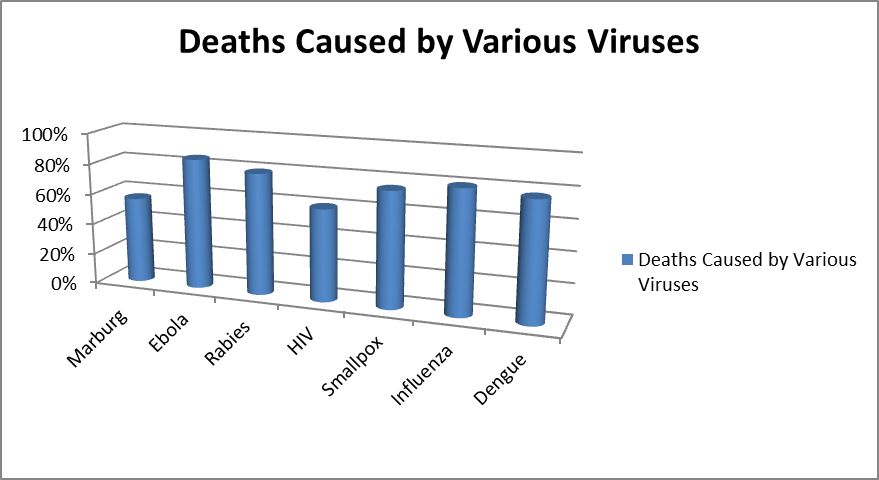
General wellbeing activity to control irresistible infections in the twentieth century depends on the nineteenth-century revelation of microorganisms as the reason for some genuine illnesses (e.g., cholera and TB). Malady control came about because of changes in sanitation and cleanliness, the disclosure of antimicrobials, and the usage of general youth immunization programs. Logical and mechanical advances assumed a noteworthy part in every one of these territories and are the establishment for the present infection observation and control frameworks. Logical discoveries additionally have added to another comprehension of the developing connection amongst people and organisms.
The most spreading infectious diseases are one of the first causes for the mortalities. These diseases are in terms infectious and deadliest if left untreated. Though vaccinations, treatments are available for these types of diseases, if not treated earlier causes death.
Market Analysis in Dubai:
Virology research includes a number of specialities like Anatomical Pathology, Diagnostic Virology, Plant Virology, and many more. Every specialist conducts research related to their respective topic to improve technologies in virology field. In Dubai alone, there are approximately around 720 researchers on virology.
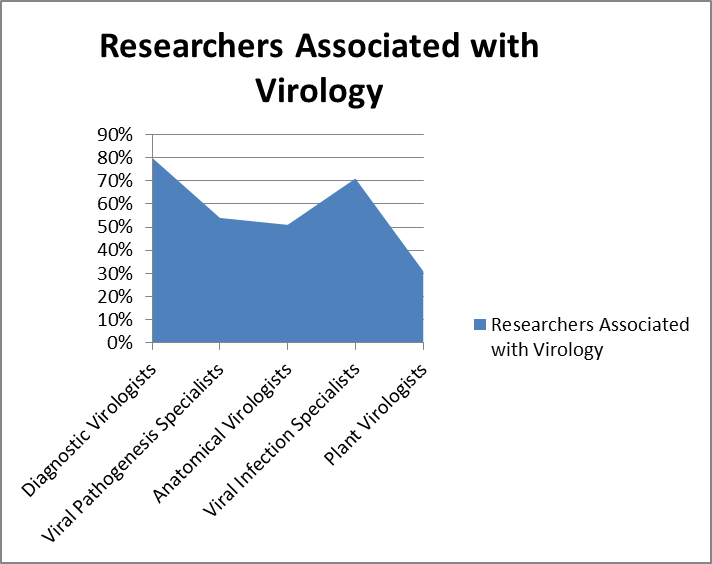
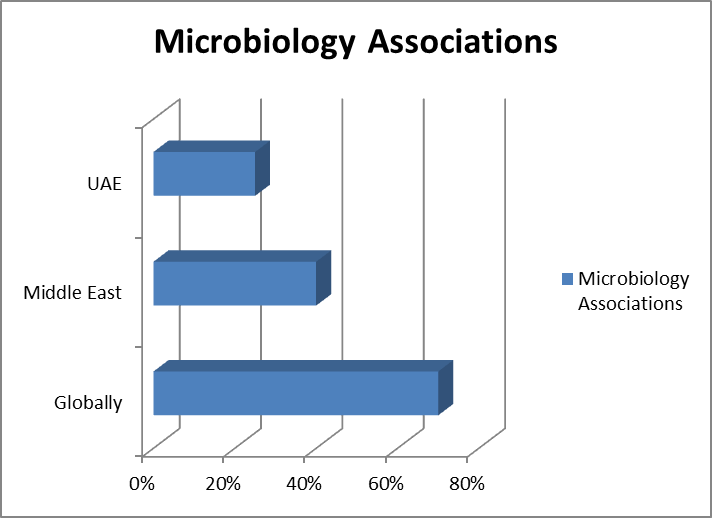

Universities and Colleges Related To the Conference:
Amity University
American University
Biotechnology University College
Baylor College of Medicine
Boston University
California Institute of Technology
Cornell University
Case Western Reserve University
Drexel University
Dubai Medical College
Dubai Pharmacy College
Dubai Medical College for Girls
Duke University
George Washington University
Harvard College
Iowa State University
Loyola University Chicago
Mayo Clinic Graduate School of Biomedical Sciences
North Carolina State University
Penn State University
Pennsylvania State University-College of Medicine
Rush University
Stanford University
The University of Texas Health Science Centre at Houston
Tufts University
Tulane University
University of California-Davis
University of California-San Francisco
University of Chicago
University of Cincinnati-Main Campus
University of Colorado Denver/Anschutz Medical Campus
University of Iowa
University of Michigan-Ann Arbor
University of Pennsylvania
University of Pittsburgh-Pittsburgh Campus
University of Southern Maine
University of Texas Southwestern Medical Centre
University of Wollongong
Associations and Societies:
USA: American Society for Virology, World Society of Virology, Pan-American Society for Clinical Virology, American Society for Microbiology, The American Association of Immunologists, Clinical Immunology Society, The Association of Medical Laboratory Immunologists, Society for Mucosal Immunology, The International Society for NeuroVirology, International Society for Antiviral Research
Europe & UK: European Society for Virology, European Society for Clinical Virology, European Federation of Immunologists, Spanish Society for Virology, Swiss Society for Microbiology, International Union of Immunological Societies, British Society for Immunology, Canadian Society for Virology, Danish Microbiological Society, Finnish Society of Allergology and Clinical Immunology, Scandinavian Society of Immunology, Hungarian Society of Immunology, Italian Society of Allergy, Asthma and Clinical Immunology, Swedish Society of Virology, Swedish Society of Clinical Microbiology, Slovak Immunological Society
Middle-East: Hellenic Society of Virology, Egyptian Society of Virology, Japanese Society for Virology, Israel Immunological Society, Turkish Society of Microbiology, Turkish Society of Clinical Microbiology, Infectious Diseases and Clinical Microbiology Speciality Society of Turkey
Asia-Pacific: Indian Virological Society, Australasian Virology Society, Australian society of clinical immunology and allergy, Chinese Society for Immunology, Chinese Society for Microbiology, Indonesian Society of Allergy and Immunology, Japanese Society for Virology, Japanese Society for Immunology, Malaysian Society of Allergy and Immunology, Malaysian Society of Microbiology
Hospitals Related to the Conference:
Boston Children’s Hospital
Howard University Hospital
Seattle Children’s Hospital
University Hospitals Cleveland
University of Lowa Hospitals
Yale-New Haven Hospital
Henri Mondor Hospital
Central Manchester University Hospital
Brigham and Women’s Hospital
Massachusetts General Hospital
Children’s Hospital of Philadelphia
Related Conferences:
Annual Conference on Bacterial, Viral and Infectious Disease August 06-08, 2018 Abu Dhabi, UAE
Global Experts Meetings on Infectious Disease September 03-04, 2018 Tokyo, Japan
14th World Conference on Infectious Diseases, Prevention and Control October 15-16, 2018 Abu Dhabi
Neglected Tropical Diseases Congress: The Future Challenges October 15-17, 2018 Abu Dhabi
6th Annual Conference on Parasitology and Infectious Diseases October 25-26, 2018 Istanbul, Turkey
8th Asia Pacific STDs and Infectious Diseases Congress November 12-13, 2018 Tokyo, Japan
8th International Conference on Bacteriology and Infectious Diseases November 22-23, 2018 Cape Town, South Africa
World Congress on Rare Diseases December 05-07, 2018 Dubai, UAE
14th World Congress on Infection Prevention and Control December 6-7, 2018 Valencia, Spain
6th International Conference on Rare Disease & Orphan Drug December 10-11, 2018 Abu Dhabi, UAE
Conference Highlights
- Viral Immunology
- Viral Pathogenesis
- Epigenetic Modifications and Viral Infections
- Vaccines and Immunotherapy
- Viruses and Cancer
- Terrifying Viral Infections
- Gene Therapy
- Innovations in Immunology
- Bacterial Vs. Viral Infections
- Viral Proteomics
- Viral Genomics
- Viral Virulence and Latency
- Antiviral Medication and Other Treatments
- Immune Response to Viral Infection
- Viruses and Epidemiology
- Pathogens in Bioremediation
- Neuro Immunology
To share your views and research, please click here to register for the Conference.
To Collaborate Scientific Professionals around the World
| Conference Date | November 18-19, 2019 | ||
| Sponsors & Exhibitors |
|
||
| Speaker Opportunity Closed | |||
| Poster Opportunity Closed | Click Here to View | ||
Useful Links
Special Issues
All accepted abstracts will be published in respective Our International Journals.
Abstracts will be provided with Digital Object Identifier by








